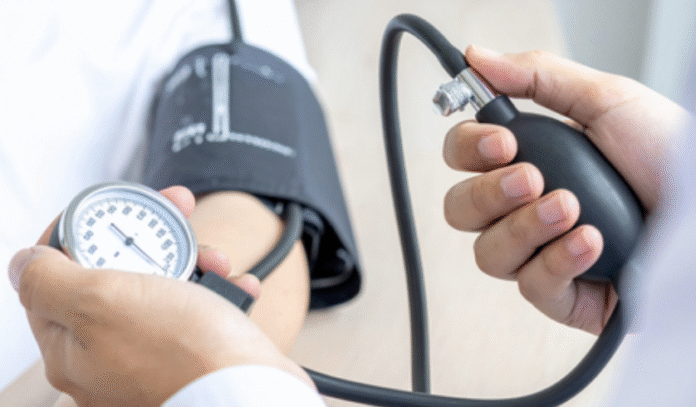NEW DELHI– With hypertension rising sharply across India, particularly among young adults, doctors say new guidelines from the American Heart Association (AHA) that set the normal blood pressure threshold at below 120/80 mm Hg could help the country tackle what many call a “silent killer.”
For the first time since 2017, the AHA has updated its definition of hypertension, lowering the diagnostic threshold from 130/90 mm Hg to below 120/80 mm Hg. Experts say the change could have sweeping implications for India, where nearly 200 million people are estimated to live with high blood pressure.
“These updated guidelines are highly relevant for India’s population,” said Dr. Mukesh Goel, Senior Consultant in Cardiothoracic and Cardiovascular Surgery at a leading city hospital. “By lowering the threshold, a much larger segment of people is now classified as hypertensive, raising awareness and pushing for earlier interventions.”
Hypertension often produces no symptoms in its early stages, leading many to discover it only after serious complications such as heart disease or stroke, said Dr. Rajeev Jayadevan, Chairman of the Scientific Committee at IMA Cochin. “Even among those receiving treatment, many fail to achieve adequate control,” he added.
Still, experts caution that aggressive treatment may not be appropriate for everyone. Some studies suggest tighter control reduces risk, but others show potential side effects such as fainting, kidney injury, or dangerously low blood pressure. “Treatment should be customized to the individual,” Jayadevan emphasized.
The new guidelines also highlight dietary strategies, including potassium-based salt substitutes for home cooking — an approach that Dr. Vivekanand Jha, Executive Director of The George Institute for Global Health, India, said is especially relevant in Indian households where salty foods are common. Exceptions apply to patients with kidney disease or those taking medications that limit potassium excretion.
Equally important, the guidelines promote team-based care, with community health workers and nurses playing a larger role — a model that experts say fits well with India’s rural health system.
Doctors stress that managing cardiovascular risk requires a comprehensive lifestyle approach: avoiding tobacco, limiting alcohol, exercising regularly, maintaining a healthy weight, and reducing salt intake.
“With hypertension rising so quickly in India, these updated guidelines are a wake-up call,” Goel said. “They encourage earlier recognition and prevention, which could ultimately save countless lives.” (Source: IANS)













